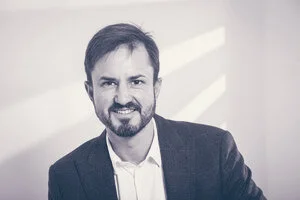The US has had ePrescribing since 2001. The new player aims to give more value to the patients.
Read MoreLooking at digital health investments in the APAC region, according to Galen Growth Asia, in 2021 China took the highest amount of funding (58.6%) for digital health, followed by India (22.3%), Australia (5.6%), Soth Korea (4.3%), and Singapore (3.8%). Healthcare expenditure differs a lot among countries: According to the World Bank, China attributed 5,3% of its GDP to healthcare, India 3%, Australia 9.91 %, and Singapore 4%. How do these healthcare systems differ and does healthcare expenditure relate to investment in digitalization?
Read More“Digital health experts know a lot about health, a lot about technology, but oftentimes they don't know a lot about the psychology of the users, the behavioral economics and ways in which you can motivate them," says Talya Miron- Shatz, PhD, an expert in medical decision making.
The psychology behind decision-making is crucial for companies to be able to present meaningful information to people, not just offer them data people can’t understand.
Read MoreSummus Global enables people from across the world to connect to renowned medical experts. The company has a network of over 4,000 specialists. Their customers come from the US, China, Canada, Philippines, Spain, England, United Arab Emirates, Hong Kong, Luxembourg, Turkey, and Ireland.
Read MoreVirtual reality can have a literally healing effect. Over 5000 studies by today have shown the efficacy of VR for pain management, PTSD, eating disorders, mental health, even helping manage pain during childbirth. The FDA provided a special designation for virtual reality as a breakthrough device for managing pain.
Read MoreSanitas is the leading Spanish health insurance and service provider and have been devoted exclusively to health care for more than 60 years. The Sanitas’ Cima hospital in Barcelona is an exemplar in digital innovation adoption.
Even before COVID, an innovation platform was established which seeks to promote entrepreneurship among employees. Another platform is in place, that aims to attract startup talent in areas such as prevention and genomics, liquid hospital, artificial intelligence, blockchain, data & analytics, and robotics.
Read MoreDespite enjoying clinical practice, Benedict Evans still came to a point where he felt he is not passionate enough about what he does, and as a surgeon, he realized he enjoys talking to patients more than treating them when they are under anesthesia. He went to a consulting position at McKinsey, then back to an NHS Trust to drive digital innovation and now to a VC position.
Read MoreLeah Houston is an Emergency Physician who has been following blockchain development since 2012. When a hospital she used to work for stole her identity for fraud billing, she decided to design a blockchain-based solution that would prevent such abuses from happening to any doctor in the future.
Read MoreKaran Raj is a “veteran” in online education. He founded TheOSCEstation — an online medical education website with videos explaining different medical topics. Given his research interest in the development of medical education and his interest in the role of social media platforms in this mix, going to TikTok was a natural move for him. Following him, you can learn about embarrassing things he did as a doctor, weird things patients have said, and even more unusual topics such as — Can cheese give you nightmares?
Read MoreGuillem Serra comes from a family of doctors and studied medicine himself, but saw that everyday routine doctors operate under is too repetitive for his taste. He decided against becoming a traditional doctor and created a platform connecting patients to doctors in a healthcare regulation-compliant way. MediQuo is a leading eHealth app in Spain and Latin America
Read MoreMany doctors leave full-time medical practice to become entrepreneurs. Many of them do that to solve systemic issues plaguing healthcare. This series includes four doctors from the US, UK and Spain, Daniel Kraft, Michael Docktor, Owain Rhys Hughes and Guillem Serra explain their experiences with healthcare IT during their clinical practice, and their motivation to develop technological solutions for healthcare.
Read MoreThe idea that AI will replace radiologists comes from the fact that today’s AI models models are very good at pattern recognition. The interesting thing in radiology are the NLP models mining radiology reports,says Woojin Kim, Chief Medical Information Officer at Nuance, former Chief of Radiography Modality, Director of Center for Translational Imaging Informatics, Associate Director of Imaging Informatics, and Assistant Professor of Radiology at the Hospital of the University of Pennsylvania.
Read MoreRafael Grossmann is a Surgeon, Educator, Healthcare Futurist, known in the digital health community as the VR surgeon. Originally from Venezuela, Rafael has been practicing medicine in the US for more than 15 years.
Read MoreNext generations of doctors, who are supposed to embrace and use new digital health inventions, are trained in an outdated model with little room for creative engagement.
Read MoreDuring the planning of implementation requirements for the Perth Children’s Hospital, which took several years, Chris Johnson made sure to include in planning representatives of all the groups in the hospital, who would be affected most in the end — pharmacists, doctors and nurses.
In the end, around 40 people reviewed the implementation requirements and took part in meetings, where IT vendors were demoing their solutions.
Read MoreIn the last decade, healthcare has started moving to value-based care and so-called patient-centricity. Patients are increasingly seen as customers, that don’t just receive information and treatment but instead take an active part in it.
Read MoreThanks to the invitation of Martin Dockweiler, President of Udabol University Bolivia, Shafi Ahmed will lead the new, latest technologies enhanced hospital in Bolivia. As he explains in the episode 18 of Faces of digital health podcast, the desire is to create a exemplary hospital, which would then be scaled to other locations as well.
Read More
















